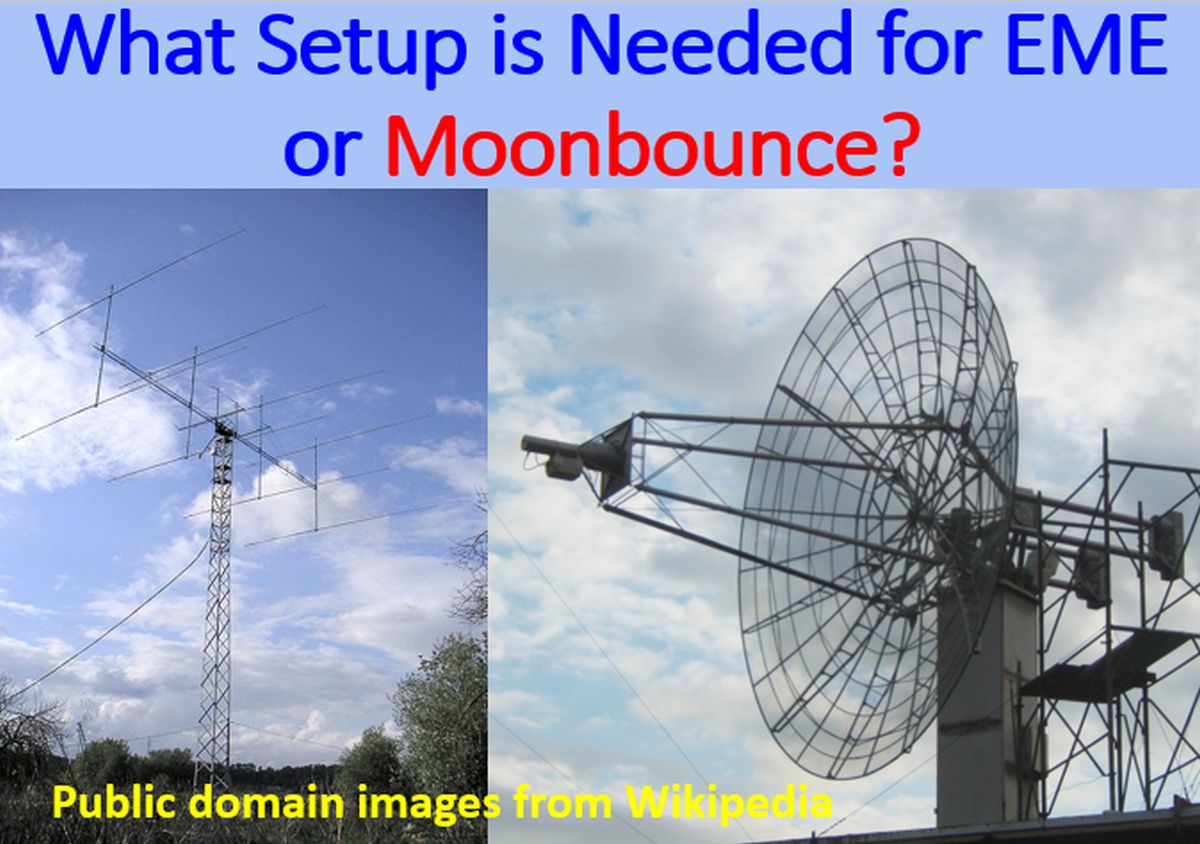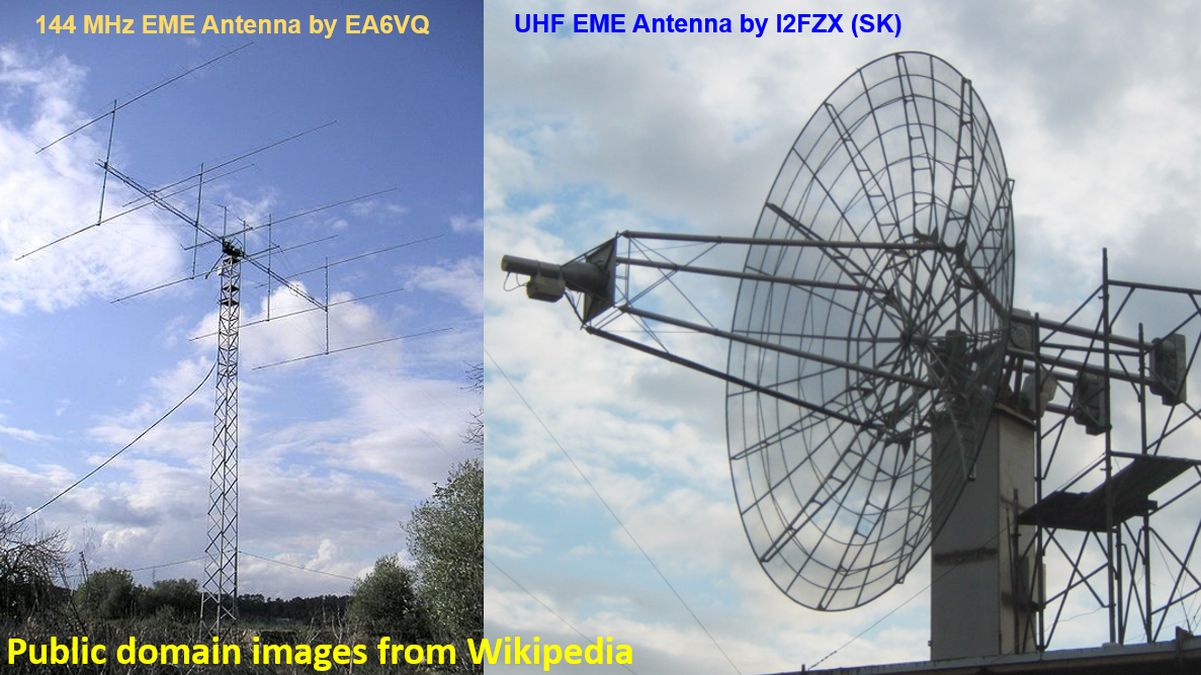What Setup is Needed for EME or Moonbounce?
What Setup is Needed for EME or Moonbounce?
EME (Earth-Moon-Earth) or Moonbounce is an interesting and challenging mode of amateur radio communication in which moon acts as a reflector of the signals, though a poor one resulting in low received signals. Typically moon reflects only about 6% of the signal it receives, meaning that high power output and highly sensitive receiver is needed for EME contacts between radio amateurs on the earth. One way distance to the moon is in the range of 384,000 km, much higher than any other mode of communication in amateur radio. Still, interest in EME has increased in recent times among amateur radio satellite operators and several of them have achieved successful two way contacts. One reason is that special Q65 mode is available in WSJT-X software for EME, which is being used by many of the new operators, as per their posts on Twitter recently. JT5 was designed for EME or moon bounce on VHF and higher bands.

Now a little bit about the antenna pictures in the cover image. That is not the minimum setup needed at both ends for EME. But at least one end should have a good setup like this while the other end can have a modest setup like single long Yagi antenna and your legal limit of power on the chosen band. First picture is is an array of eight Yagi antennas fed in phase by EA6VQ for 144 MHz EME. Second picture is a parabolic reflector antenna of 6 m diameter, by I2FZX (Silent Key) for EME on UHF.

Very often it is a sked QSO between an operator with modest setup on one side and high power with a huge antenna array or a large dish on the other side. SSB contacts require very high power and is beyond the reach of an average amateur radio operator. It is heard that about 1500 Watts of output is needed for an SSB QSO. I recently saw a video in which the operator was receiving the echo from moon of the call on SSB. There are several operators posting successful QSOs with a single Yagi, though the other end would have been a powerful setup. Tracking the moon is said to be easier than LEO satellites as the speed of movement is lesser. Doppler shifts are also not as fast as in case of LEO satellites. But there are other problems like galactic noise, especially when moon crosses the plane of the Milky Way twice a month. EME signals will be weaker at apogee compared to perigee as the distance is more.
Though right from 50 MHz to 47 GHz have been used for EME, most commonly used bands are 2 m, 70 cm and 23 cm. Prior to the digital era, communications were mostly on CW and rarely on SSB when the link budget permints enough power and antenna setup. Typical time lag for a signal to reflect back is around 2.5 seconds for two way travel time at the speed of light. Multiple reflections from regions between leading edge and trailing edge of the lunar disc can cause interference at higher speed of digital keying, though it may not be a problem at CW and low speeds of digital keying.
Other factors which come into play during an EME contact are the Faraday rotation and fading due to libration. It is well known that radiofrequency signal can rotate as they pass through the ionosphere so that their polarization changes. Though it may not be a problem in the 1.2 GHz band and above, full 360 degree rotation is possible at 432 MHz. More than one complete rotation is possible on lower bands. Libration fading is due to multiple wavefronts being received from different parts of the moon summing up. These can change with relative movements of the earth and moon. Word meaning for libration is given as the apparent or real oscillation of the moon by which parts near the edge of the disc that are often not visible from the earth sometimes come into view.
Finally, if you wish to have an EME contact, first thing is to establish a non EME contact with a station having an excellent setup to guide you through the process and finally achieve an EME contact by fixing up a schedule. Quite a lot of perseverance and patience at both ends is needed for achieving an EME contact. There are a quite a few radio amateurs on Twitter or X, and some of them are posting EME contacts. That could be your starting point for venturing into moonbounce, a dream of many a radio amateur. Good luck and see you on the moon, though I am not sure when and if at all, my radio signals will ever reach the moon, as I have only reached the LEO satellites at present!
Update: Most important factors are noise free receiving site, and preferably flat ground around.
My Twitter page: https://twitter.com/Johnsontechword